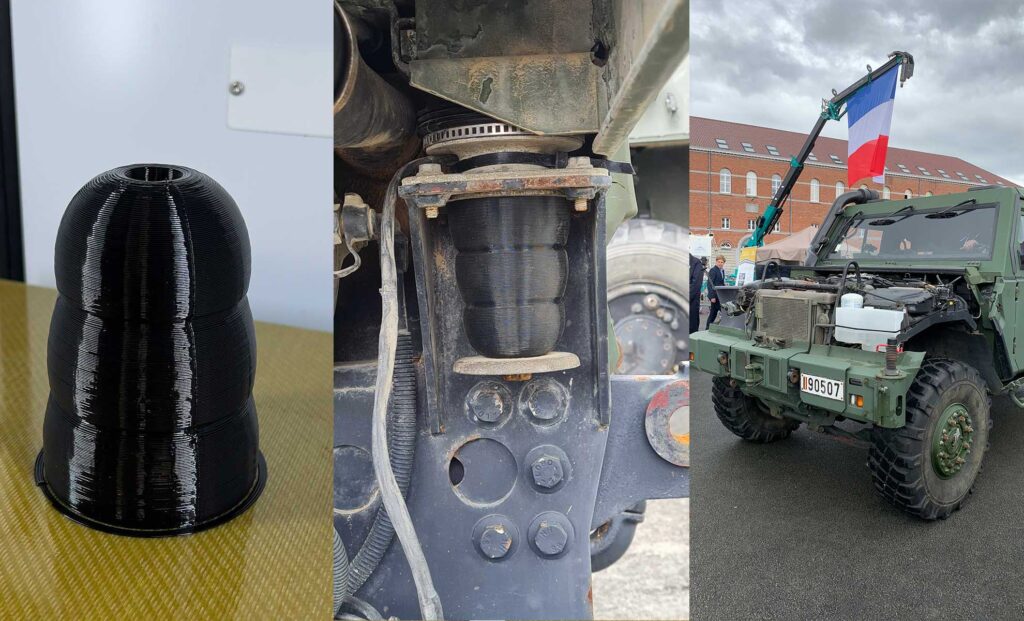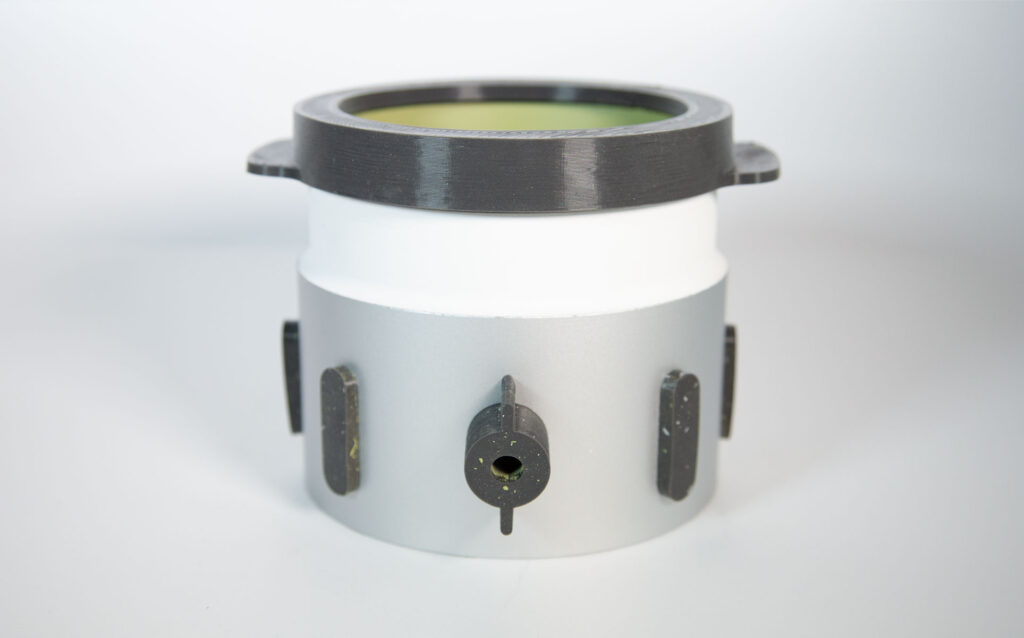French Researchers Use 3D Silicone Printing to Design a Physical Swallowing Simulator
The need for improved surgical techniques is constantly growing. With advances in 3D silicone printing, a new dimension opens up in the development of physical simulators for modeling and understanding complex physiological mechanisms such as swallowing.
Physical simulators made with materials like silicone mimic the texture of skin or the modeled organ, offering a more faithful experience of the reality of surgical intervention and the reproduction of physiological movements. It is in this context that Lynxter 3D printers have been integrated into an ambitious medical research project, the PASSE project (Project for the Improvement of the Swall-E Simulator), funded by the Institut Carnot MICA, and jointly led by Inserm Unit 1121 (Strasbourg) and the Regional Institute of Advanced Materials (IRMA) (Ploemeur).
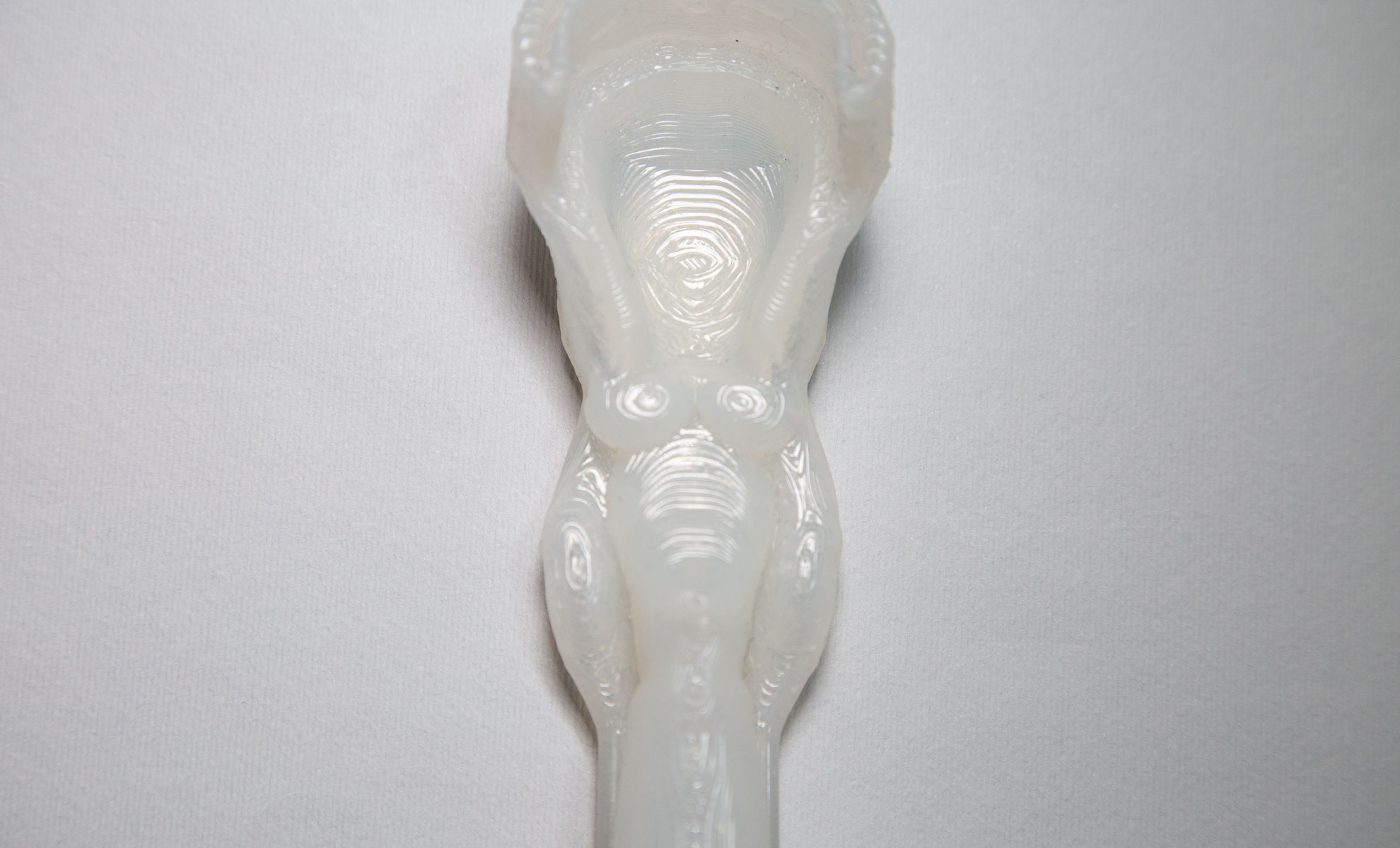
Close-up of the pharyngolarynx printed by the S300X for the Swall-E physical simulator
Swall-E, a Physical Swallowing Simulator for Humans
The initiators of this high-tech biomedical project are researchers from Inserm Unit 1121, Prof. Christian Debry, head of the ENT and Cervico-Facial Surgery department at the University Hospitals of Strasbourg (HUS) and a member of Inserm Unit 1121, and Yo Fujiso, Research Engineer at Inserm Unit 1121. The goal is to accurately recreate the complex movements of the pharyngolarynx (an anatomical conduit consisting of the pharynx and larynx), providing a simulation platform for ENT surgeons, enabling in vitro reproducibility simulating the in vivo context of patients. This concept is based on the principle of digital twins, a virtual model (here real but in silico – computer model) of a physical object that simulates behavior.
3D Silicone Printing and the Swall-E Project
In this perspective, Swall-E embodies the future of personalized medicine by reproducing an in vitro controlled electromechanical physiological environment to explore the subtleties and complexity of swallowing, while simplifying it to adapt targeted therapies (next-generation ENT implants of the pharynx or larynx). The concept of “simplexity” emerges, which is the art of making complex notions simple, readable, and understandable in the fields of systems science, engineering, and neuroscience. Coupled with the notion of digital twins, Swall-E brings these researches fully into the future.
The ultimate goal is to design a fully functional artificial pharyngolarynx for patients who have lost all or part of the functionality of this organ due to cancer, radiotherapy, or particularly certain neurodegenerative diseases severely compromising the peripheral functions of swallowing. Such an advance would transform the lives of patients by restoring the ability to eat, reducing or eliminating mis-swallowing, thereby significantly improving their quality of life and reducing morbidity/mortality.
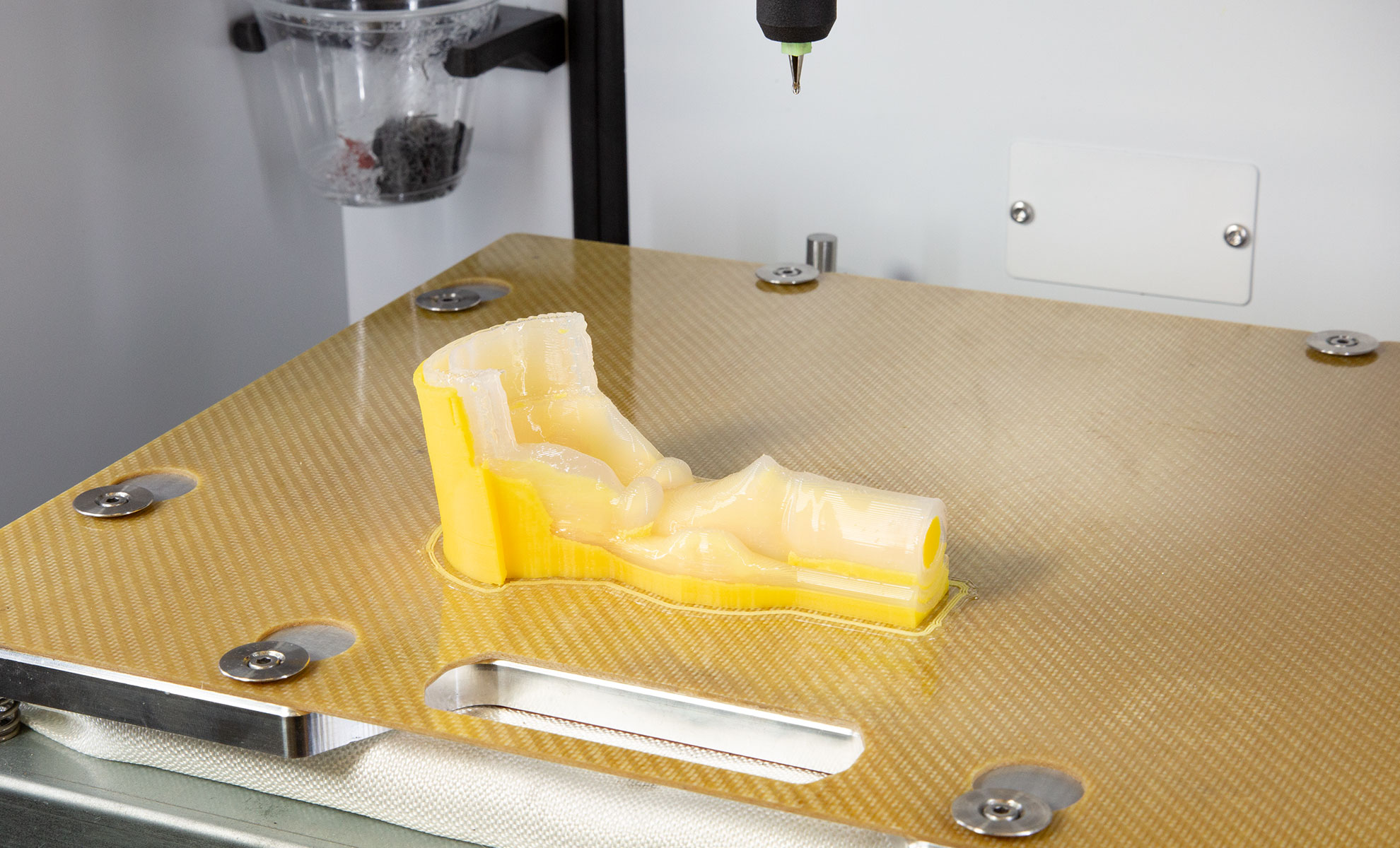
Pharyngolarynx printed by the S300X for Swall-E, with soluble support
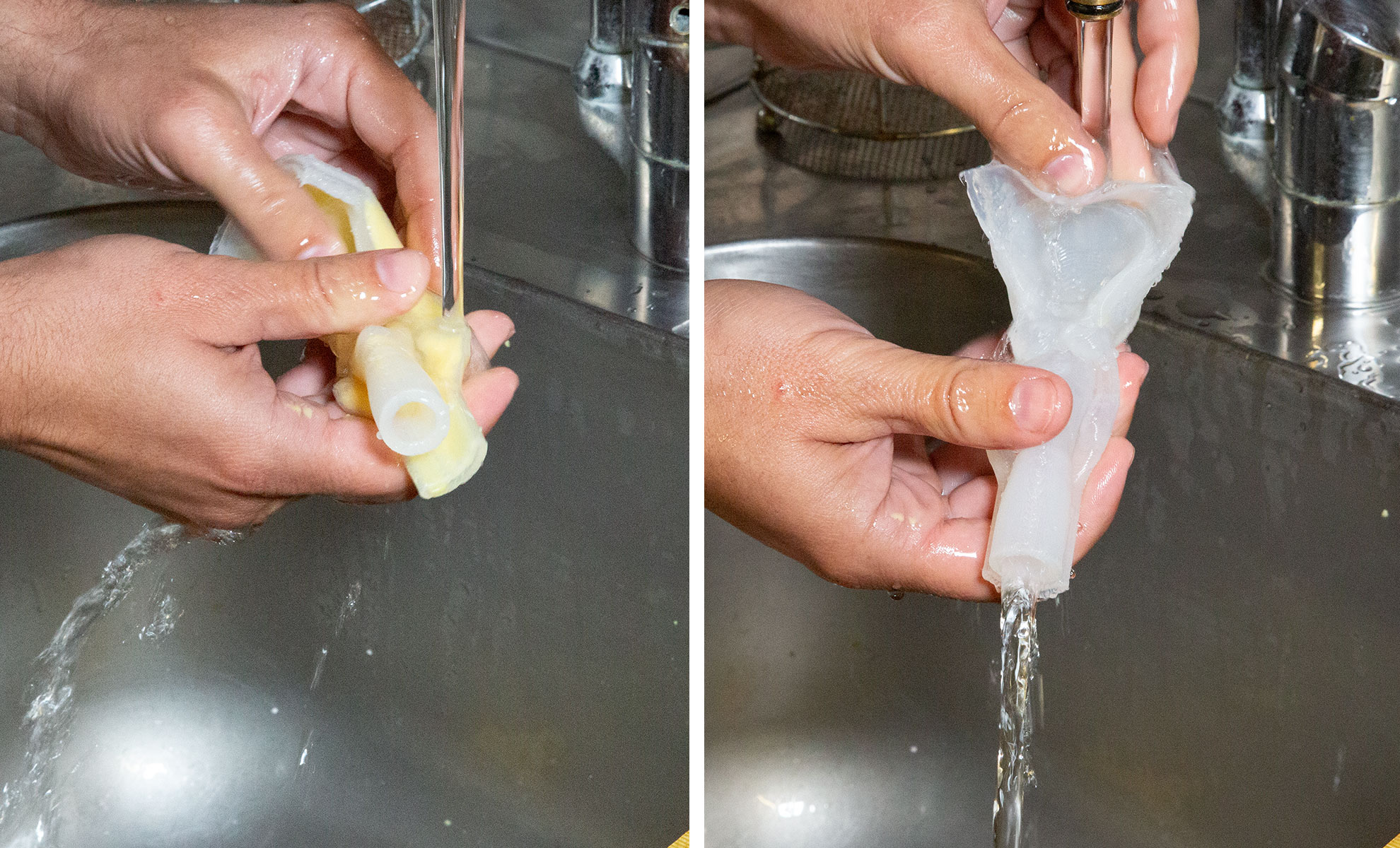
Cleaning the support material of the pharyngolarynx printed by the S300X for Swall-E
Cutting-Edge Technologies at the Heart of the Project
The Swall-E prototype combines various advanced technologies:
3D Silicone Printing: This technology allows the creation of highly detailed models of the pharyngolarynx using a flexible material, silicone, which closely mimics the real texture of the organ. The Carnot MICA Institute collaborates with IRMA, the Regional Institute of Advanced Materials, through Clément Denoual, R&D Materials Engineer, to manufacture silicone conduits. They use 3D printing to test different anatomies and morphologies. The Lynxter S600D and S300X printers have proven to be the obvious choice, enabling precise reconstruction of the pharyngolarynx in terms of appearance, texture, and haptic perception.
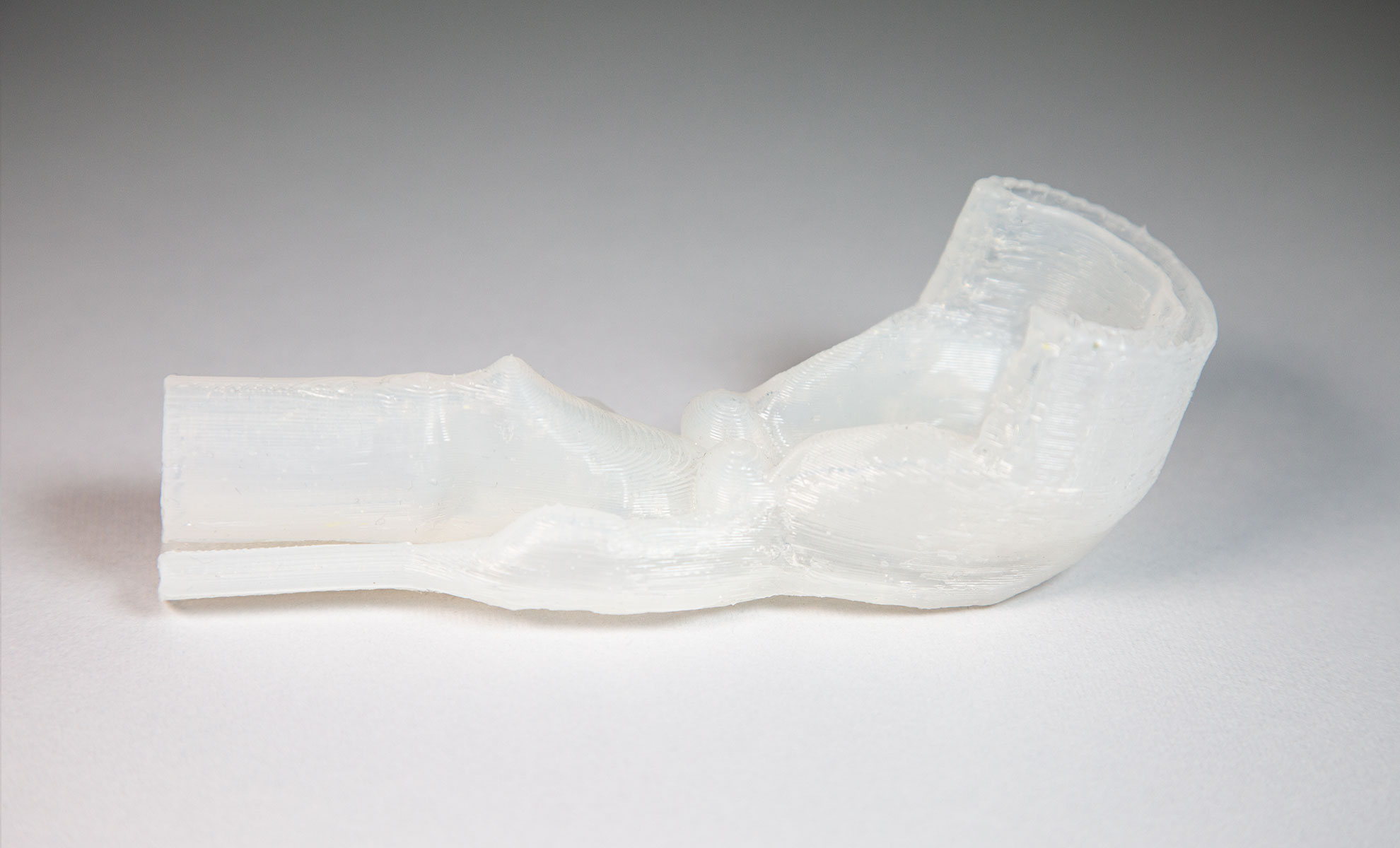
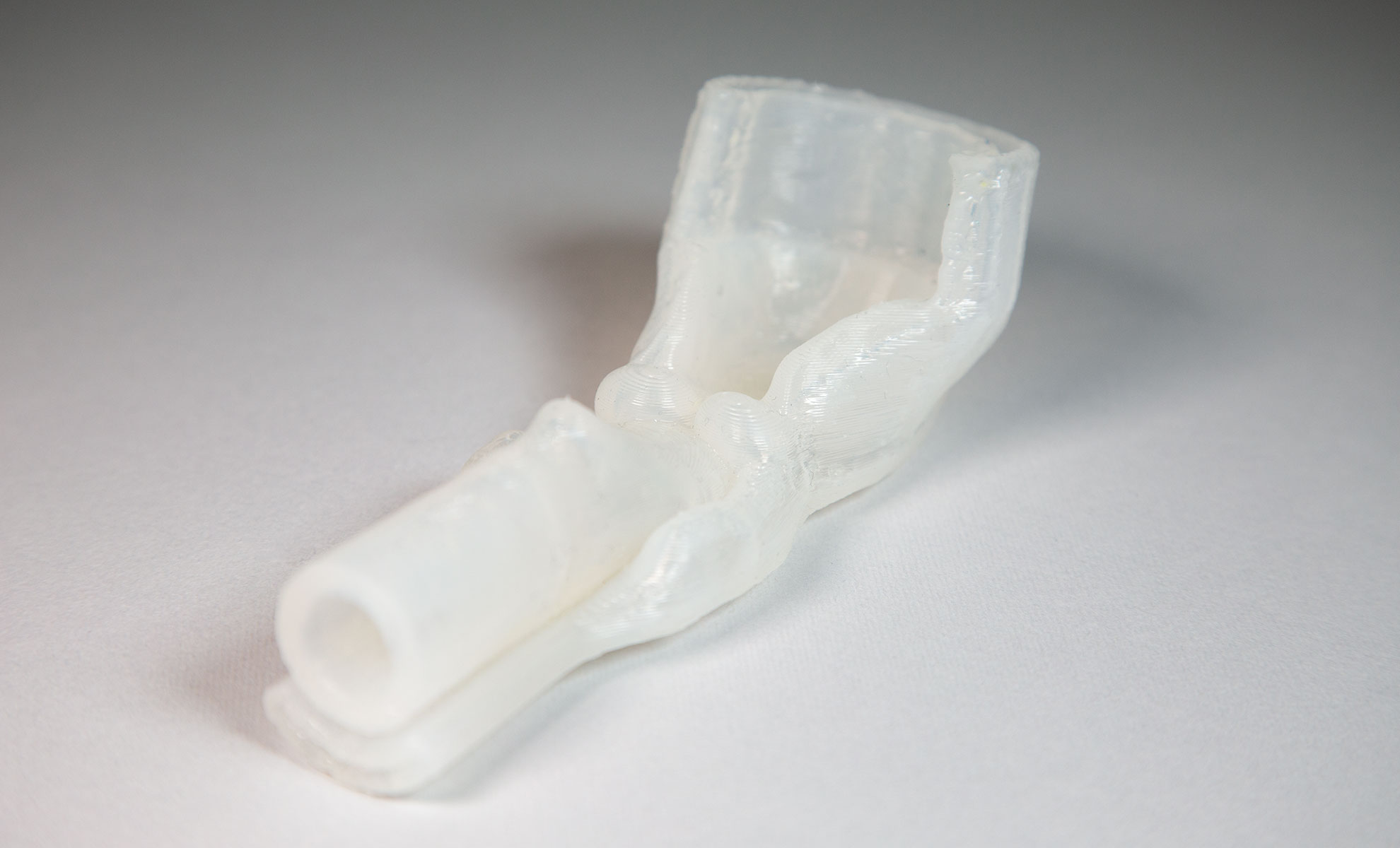
Pharyngolarynx printed by the S300X for Swall-E
3D Reconstruction: Using advanced 3D modeling techniques, researchers can create digital models of patient-specific pharyngolaryngeal structures, paving the way for personalized ENT therapeutic strategies.

3D visualization of the pharyngolarynx
Biomaterials and Bioengineering: The team is exploring biocompatible materials that mimic the texture and function of human tissues, ensuring compatibility for future implantations in patients.
Beyond its technological prowess, Swall-E highlights the collaborative power between engineers, surgeons, and bioengineering experts in a multidisciplinary effort that pushes the boundaries of medical innovation.

Overview of the Swall-E swallowing simulator – actuation metal cables, electrical cables, and power supply not shown: (1) silicone anatomical conduit; (2) actuator; (3) pressure generator; (4) bolus storage tank; (5) motorized syringe; (6) solenoid valve; (7) electronic board and microcontroller; (8) high-speed side camera; (9) aluminum structure
Ambitious Goals for Public Health
Although still in development, Swall-E shows immense potential. The initial prototype demonstrates the simulator’s ability to:
- Thoroughly study the swallowing process in healthy patients and those with specific pathologies, enabling a better understanding of functional impairments.
- Simulate various medical conditions to train surgeons in a risk-free environment, improving their skills and reducing the risk of intraoperative complications.
- Test and validate new surgical techniques and next-generation implants in vitro, ensuring their effectiveness and safety before application in clinical settings.
Thus, the development of Swall-E opens the way to innovative and effective solutions to the medical and surgical challenges related to swallowing, promising significant advances in personalized medicine and patient care.
For more information, please visit: https://lynxter.fr
Sources :
https://journals.plos.org/plosone/article?id=10.1371/journal.pone.0208193
Présentation du projet Swall-E, un simulateur de déglutition humaine sur Youtube – 2023
* Bradley A. Schiff, MD, Montefiore Medical Center, The University Hospital of Albert Einstein College of Medicine
** Debry, C., Dupret–Bories, A., Vrana, N.E., Hemar, P., Lavalle, P. and Schultz, P. (2014), Laryngeal replacement with an artificial larynx after total laryngectomy: The possibility of restoring larynx functionality in the future. Head Neck, 36: 1669-1673. https://doi.org/10.1002/hed.23621
** Debry, C., Vrana, N.E., Dupret-Bories, A., Implantation of an Artificial Larynx after Total Laryngectomy. N Engl J Med. 2017 Jan 5;376(1):97-98. doi: 10.1056/NEJMc161196
DOWNLOAD THE WHITE PAPER
Download now “Improve your workflow with silicone 3D printing”.
Discover how this new technology can enhance your productivity and innovation.
Don’t miss this opportunity to gain a new competitive advantage.


